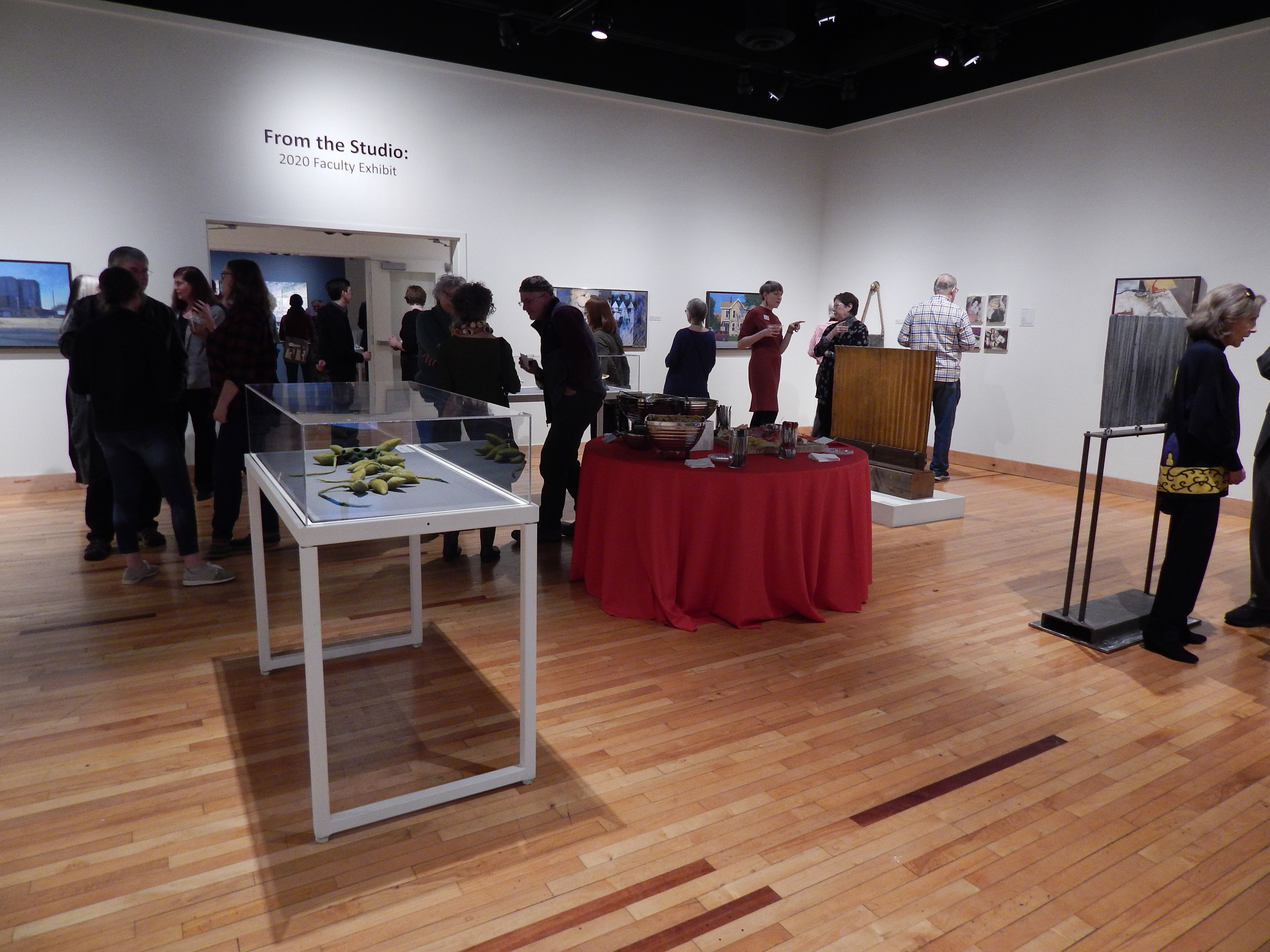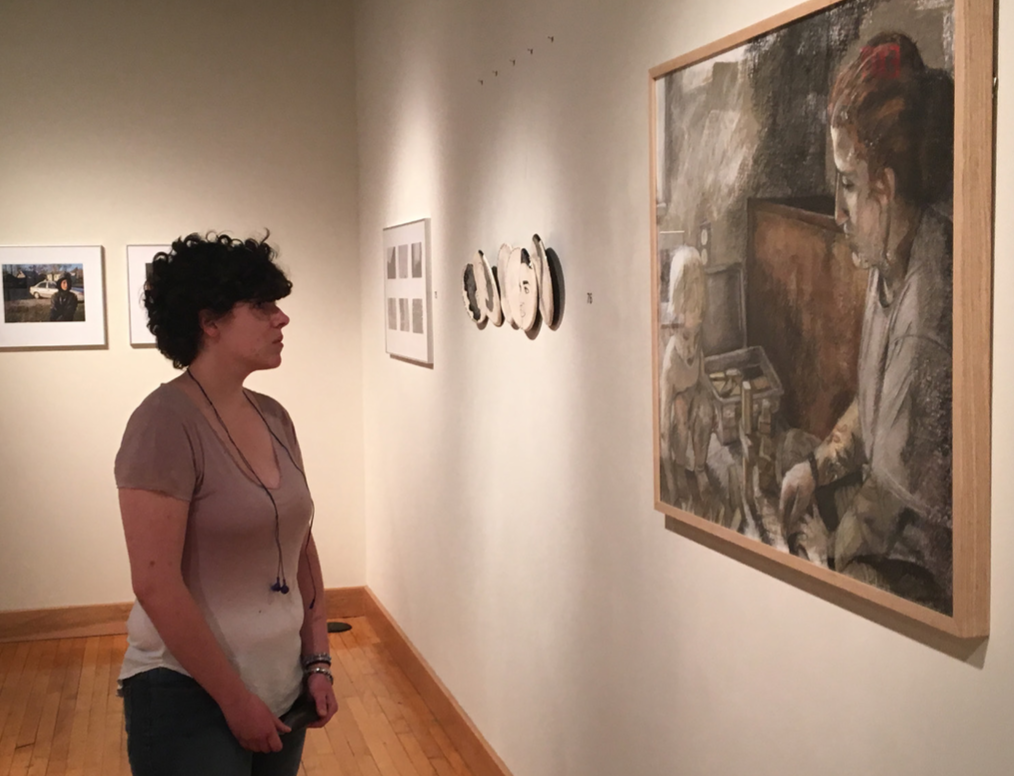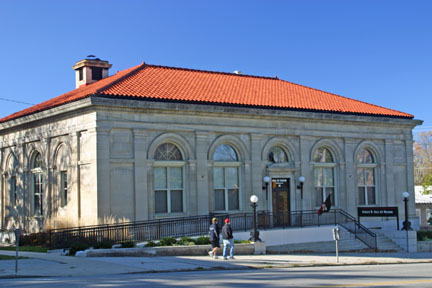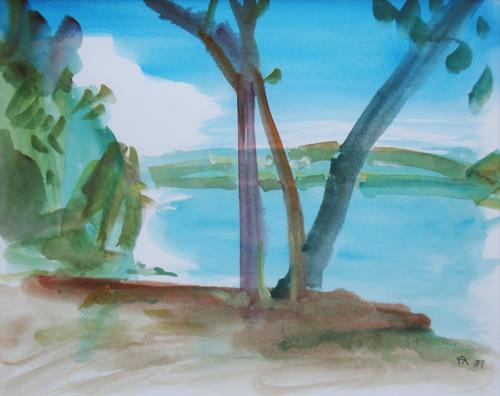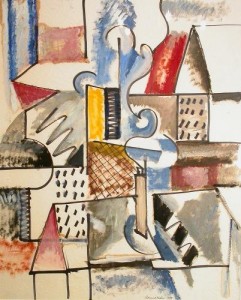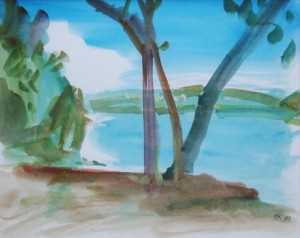Katie Cantrell
Transcript correspondent
kmcantre@owu.edu
Ohio Wesleyan fine arts faculty showed off their talents outside of the classroom last week, displaying their forte in the form of 3-D designs, jewelry, sculptures, oil paintings and digital prints.
The Ross Art Museum opened a new exhibit Wednesday, featuring the works of many of the fine arts faculty members. About 75 people, including OWU President Rock Jones, attended the free public reception from 5 p.m. to 7 p.m., which included the musical stylings of the jazz group The Starliners, along with complimentary food and drinks.
The artists on display included:
- Associate professor Kristina Bogdanov -sculptures and photo-lithography
- Professor Cynthia Cetlin-jewelry
- Associate professor Frank Hobbs -oil paintings
- Professor Jim Krehbiel – digital prints
- Professor Jeff Nilan -photographs
- Part-time professor Jonathan Quick – sculptures and 3-D designs
Every artist works their medium differently, so the works within the exhibit took various levels of time to complete. Hobbs said his favorite piece in the exhibit, an oil painting of a bridge construction site, took only two to three sessions, totaling about six or seven hours.
Meanwhile, Krehbiels’ favorite piece, a digital print of a cold sunrise over a mesa as seen from a Pueblo shrine, took 2 ½ years.
Artists face different kinds of challenges, depending on the piece they create. Nilan’s was personal for his favorite piece in the exhibit.
“It was challenging to look back in time and trying to avoid nostalgia and to just try and see what was there,” Nilansaid about his accordion-shaped photobook, with still images from home videos featuring his two sons.
Hobbs’ challenges were more technical for his bridge construction painting.
“Any time you have a painting with this many dark colors and shadows it can be very difficult to work with,” Hobbs said.
Hobbs said he had plenty of motivation to complete the piece, however he was not trying to impart a specific message to his audience.
“My painting process is more of a soliloquy, so it’s like I’m talking to myself. I’m not interested in using art as propaganda,” Hobbs said.
Like challenges, every artist has different motivation driving their work. Sometimes, there’s an underlying message for an audience.
Krehbiel had a very specific motivation in mind when he created his digital print “Cold Sunrise in an Ancient Place,” which depicted a sunrise he watched one cold morning over a mesa from a Pueblo shrine built in the 1200s.
“It was a memory drawing of that along with some rock art and pictographs added in as well,” he said. “I wanted my audience to see the principles of mirroring and reflection in the piece, much like the sun. Movements of the sun are such as cyclical thing.”
The display of faculty art runs through April 5.
